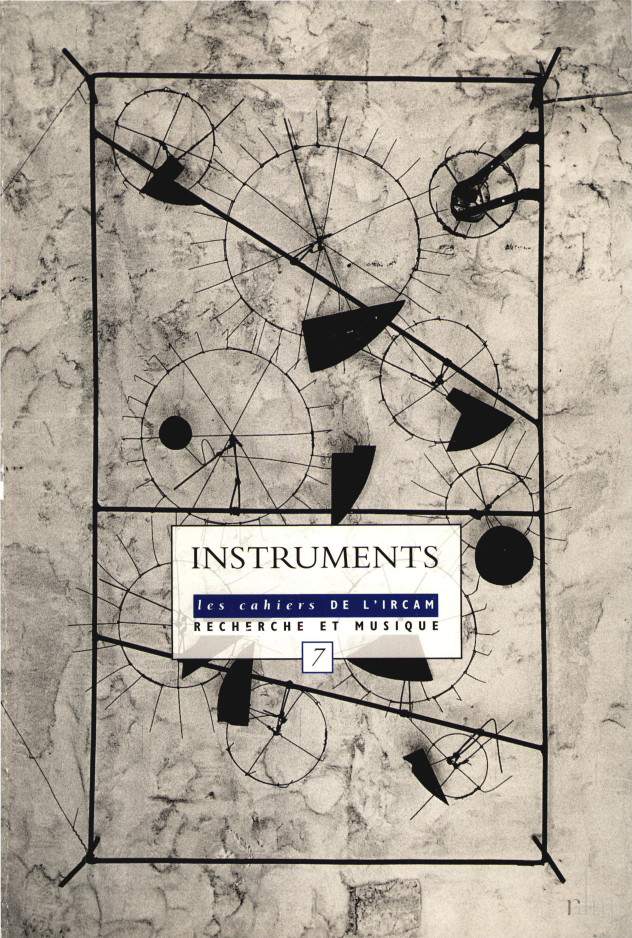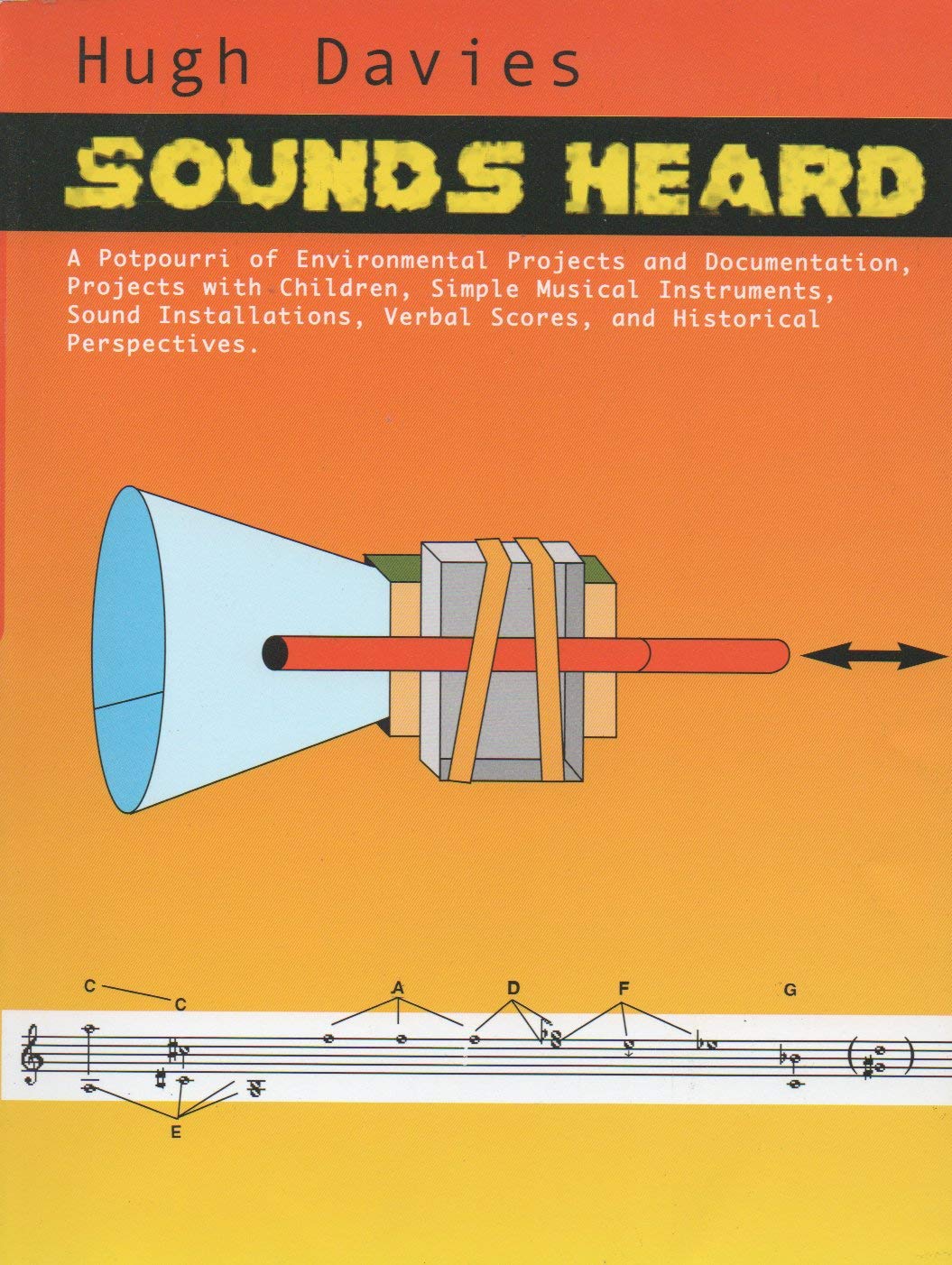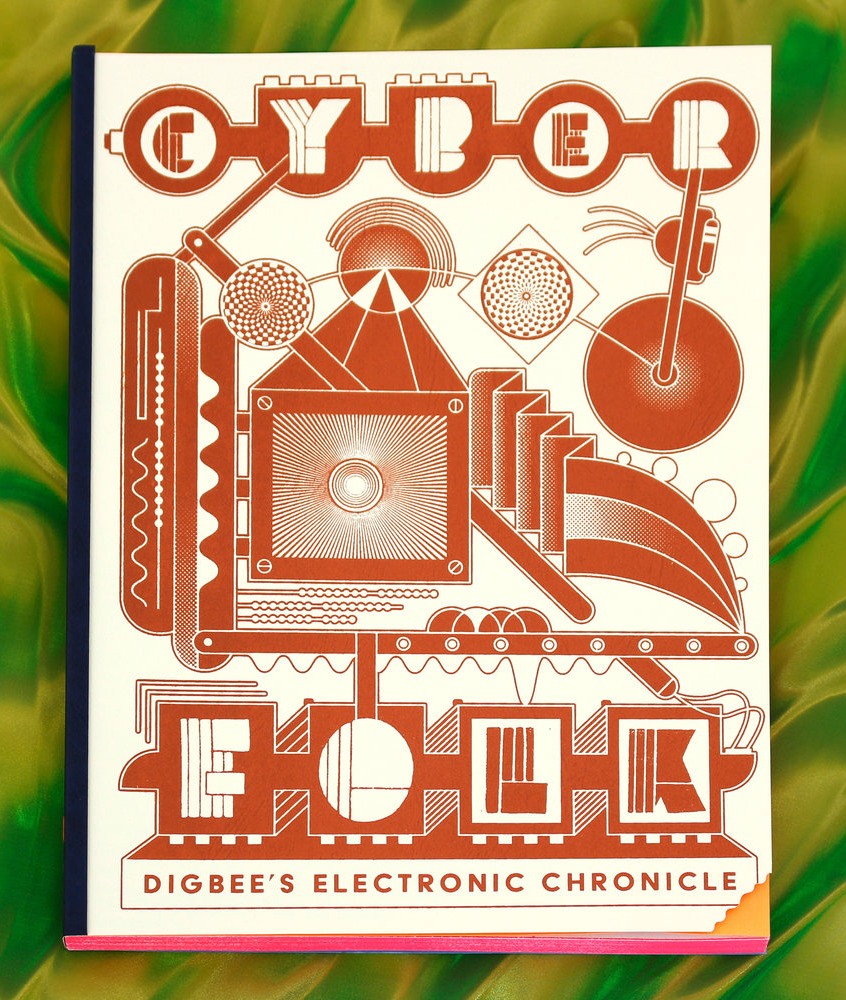Cahiers de l’IRCAM, 7: Instruments (1995) [French]
Filed under journal | Tags: · music, musical instruments

A special issue of the journal of the Institut de recherche et coordination acoustique/musique (IRCAM) based at the Pompidou Centre in Paris.
Edited by Peter Szendy
Publisher Editions Ircam/Centre Georges-Pompidou, Paris, August 1995
ISBN 285850833X
153 pages
PDF (45 MB)
Comment (0)Hugh Davies: Sounds Heard: A Potpourri of Environmental Projects and Documentation, Projects with Children, Simple Musical Instruments, Sound Installations, Verbal Scores, and Historical Perspectives (2002)
Filed under sound recording | Tags: · composition, electronic music, environment, experimental music, improvised music, music, music criticism, musical instruments, sound, sound art

“Sounds Heard is not only a collection of writings intended for people who are interested or involved in contemporary music, especially those performers – including children – who lack a formal musical training. It also charts a wide cross-section of the activities of an intriguing musical personality. At different times in Hugh Davies’ nearly 40 year career he has been variously described as “the world’s leading electromusicologist”, “the most informed person around on the general subject of new instruments”, “unique English composer”, “one of the most interesting instrument inventors of recent decades”, “the remarkable live-electronics ‘freak”‘, an “electronic wizard”, “a humanist” and “I have never seen any music teacher who is as fond of children as he is”. Do these really refer to only one person? Who is the real Hugh Davies? Why has his modesty prevented him from being better known?
This book focuses on many of Davies’ insights about working as an artist, a musician, a composer, a performer, an instrument inventor, an educator and a researcher. He takes nothing for granted, and there are always wider implications than his own immediate involvement. Even his more avantgarde scenarios are tempered with his “very British sense of humour”. Many of the different areas of experimental music since the 1960s are touched on, including electronic music, live electronics, invented instruments, sound sculpture, sound installations and free improvisation, in all of which he was one of the British pioneers.
The CD illustrates a cross-section of the themes covered in the book. As with most of Hugh Davies’ solo performances and recordings, no conventional instruments were used on the entire album, with the exception of one short piece in which existing music has been manipulated with tape techniques.” (from back cover)
Publisher Soundworld Publishers, Chelmsford, 2002
ISBN 1902440056, 9781902440057
124 pages
PDF (29 MB)
Selections from accompanying CD
Cyber Folk: Digbee’s Electronic Chronicle (2019)
Filed under catalogue | Tags: · diy, electronic music, music, musical instruments

“Cyber Folk: Digbee’s Electronic Chronicle gives a thorough look into a unique, highly personal approach to musical electronic instrument building, an approach that is many things: naïve, enthusiastic, sincere, alien, and familiar. This strange future/primitive work journal contains the release of tons of data, beautiful photos, schematics, building techniques, and the inside stories behind many of Digbee’s most beloved instruments.
Also inside are artist features for Digbee’s favorite musical electronic practitioners. Within are never-before-published photos and stories of the work of Craig Anderton, Charles Cohen, Michael Johnsen, and Nautical Almanac’s Twig Harper and Carly Ptak.
Peppered throughout the book are examples of connected imagery from comic books and science fiction illustration.
This book was not written for a specific niche. Anyone with a curious mind and interest in musical electronics, experimental music, art, and craft will find a place of connection.
Cyber Folk: Digbee’s Electronic Chronicle is produced by Harpy Gallery and Selfish 60 Studio for the art exhibition entitled New American Instruments which was up from July 20th to August 10th, 2019.”
Publisher Harpy Gallery & Selfish 60 Studio, Rutherford, NJ, 2019
143 pages
PDF (21 MB)
Comment (0)
